Freshwater, M. F.
Journal of Plastic, Reconstructive & Aesthetic Surgery, 2016-09-01, Volúmen 69, Número 9, Pages 1165-1177
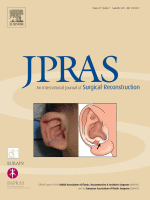
All scientific data should be presented with sufficient accuracy and precision so that they can be both analyzed properly and reproduced. Visual data are the foundation upon which plastic surgeons advance knowledge. We use visual data to achieve reproducible results by discerning details of procedures and differences between pre- and post-surgery images.
This review highlights how the presentation of visual data evolved from 1816, when Joseph Carpue published his book on nasal reconstruction to 1916, when Captain Harold Gillies began to treat over 2000 casualties from the Battle of the Somme. It shows the frailties of human nature that led some authors such as Carl von Graefe, Joseph Pancoast and Thomas Mutter to record inaccurate methods or results that could not be reproduced, and what measures other authors such as Eduard Zeis, Johann Dieffenbach, and Gurdon Buck took to affirm the accuracy of their results.
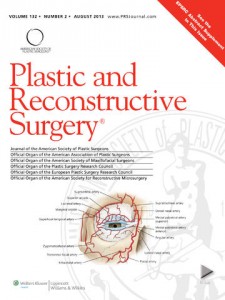 The ability to surgically rejuvenate the aging face has progressed in parallel with plastic surgeons’ understanding of facial anatomy. In turn, a more clear explanation now exists for the visible changes seen in the aging face. This article and its associated video content review the current understanding of facial anatomy as it relates to facial aging. The standard face-lift techniques are explained and their various features, both good and bad, are reviewed. The objective is for surgeons to make a better aesthetic diagnosis before embarking on face-lift surgery, and to have the ability to use the appropriate technique depending on the clinical situation.
The ability to surgically rejuvenate the aging face has progressed in parallel with plastic surgeons’ understanding of facial anatomy. In turn, a more clear explanation now exists for the visible changes seen in the aging face. This article and its associated video content review the current understanding of facial anatomy as it relates to facial aging. The standard face-lift techniques are explained and their various features, both good and bad, are reviewed. The objective is for surgeons to make a better aesthetic diagnosis before embarking on face-lift surgery, and to have the ability to use the appropriate technique depending on the clinical situation. The second decade of the 20th century saw the publication of two landmark books – John Staige Davis’ Plastic Surgery its Principles and Practice published in Philadelphia in 1919 and Major Harold Gillies’ Plastic Surgery of the Face published in the United Kingdom early 1920. The aim of this paper is to compare the books critically as scholarly achievements in their time and note their present day relevance.
The second decade of the 20th century saw the publication of two landmark books – John Staige Davis’ Plastic Surgery its Principles and Practice published in Philadelphia in 1919 and Major Harold Gillies’ Plastic Surgery of the Face published in the United Kingdom early 1920. The aim of this paper is to compare the books critically as scholarly achievements in their time and note their present day relevance.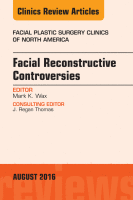 Prophylactic antibiotic use in facial plastic surgery is a highly controversial topic primarily due to the lack of evidence in support of or against antibiotic use. In this section the authors present the available literature on the most commonly performed procedures within facial plastic surgery in an attempt to see if the data support or contradict the need for antibiotic prophylaxis in facial plastic surgery.
Prophylactic antibiotic use in facial plastic surgery is a highly controversial topic primarily due to the lack of evidence in support of or against antibiotic use. In this section the authors present the available literature on the most commonly performed procedures within facial plastic surgery in an attempt to see if the data support or contradict the need for antibiotic prophylaxis in facial plastic surgery. Las técnicas actuales de rejuvenecimiento facial son producto de años de refinamiento técnico y la máxima expresión de la destreza del cirujano plástico moderno. El rejuvenecimiento del tercio medio facial ha retomado interés recientemente dado que permite reposicionar en bloque los tejidos de la región malar a su posición juvenil original. Como efecto agregado, atenúa el surco nasogeniano por tracción tisular secundaria. Para lograr este efecto se han descrito múltiples abordajes, planos de disección y métodos de fijación tisular.
Las técnicas actuales de rejuvenecimiento facial son producto de años de refinamiento técnico y la máxima expresión de la destreza del cirujano plástico moderno. El rejuvenecimiento del tercio medio facial ha retomado interés recientemente dado que permite reposicionar en bloque los tejidos de la región malar a su posición juvenil original. Como efecto agregado, atenúa el surco nasogeniano por tracción tisular secundaria. Para lograr este efecto se han descrito múltiples abordajes, planos de disección y métodos de fijación tisular. Although platelet-rich plasma (PRP) is nowadays a common method in various medical fields, including cosmetic surgery or dermatology, the expensiveness of the kit for processing is still a hurdle.
Although platelet-rich plasma (PRP) is nowadays a common method in various medical fields, including cosmetic surgery or dermatology, the expensiveness of the kit for processing is still a hurdle.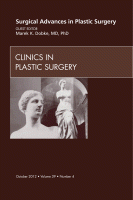
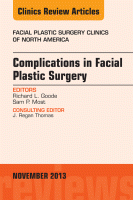 Rhytidectomy remains a challenging surgical procedure for even the most experienced aesthetic plastic surgeons. The challenges are compounded by complications that are inherent to this procedure and place added pressure on the doctor-patient relationship. Expectations for both parties are high and the margin for error nil. This article presents a personal approach to the avoidance and management of complications associated with facelift surgery. It presents the author’s personal approach as a plastic surgeon in the practice of aesthetic plastic surgery over the past 25 years. Clinical pearls are provided to obtain optimum results in rhytidectomy and limit associated sequelae.
Rhytidectomy remains a challenging surgical procedure for even the most experienced aesthetic plastic surgeons. The challenges are compounded by complications that are inherent to this procedure and place added pressure on the doctor-patient relationship. Expectations for both parties are high and the margin for error nil. This article presents a personal approach to the avoidance and management of complications associated with facelift surgery. It presents the author’s personal approach as a plastic surgeon in the practice of aesthetic plastic surgery over the past 25 years. Clinical pearls are provided to obtain optimum results in rhytidectomy and limit associated sequelae.






 Sitio web publicado el
Sitio web publicado el
Los lectores comentan